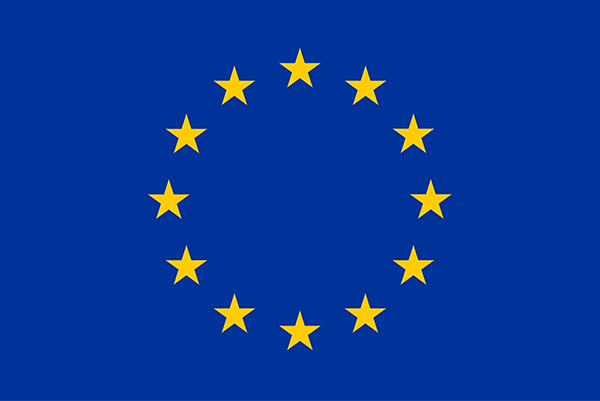The ‘polluter pays’ principle is an environmental policy principle which requires that the costs of pollution be borne by those who cause it. The ‘polluter pays’ principle is normally implemented through two different policy approaches: command-and-control and market-based. Command-and-control approaches include performance and technology standards, such as environmental regulations in the production of a given polluting technology. Market-based instruments include pollution or ecotaxes, tradable pollution permits and product labelling.
The idea that taxation can be used to correct or internalise externalities was first introduced by A.C. Pigou in 1920 and has been generally accepted by economists as an efficient means to remedy inefficiencies in the allocation of resources, but it is understood that other social considerations such as equity, rights, political considerations and enforcement costs may tip the balance towards a preference for other policy instruments despite being less cost-effective. Pigou suggested that abatement should be pursued up to the point where the marginal cost of further abatement (reflected in the emissions fee) is just equal to the marginal benefit from reducing pollution. This ‘optimal pollution’ tax is widely referred to as the ‘Pigouvian rate’.
Most of the time, the ‘polluter pays’ principle takes the form of a tax collected by government and levied per unit of pollution emitted into the air or water. As a policy instrument for the control of pollution, a tax on emissions will theoretically reduce pollution, because firms or individuals will reduce emissions in order to avoid paying the tax. Under a range of market conditions, standard economists assume that pollution tax will generally be more cost-effective at reducing pollution than regulations: the total abatement cost of achieving a specified level of pollution reduction will generally be lower under a pollution tax than for a command-and-control approach that achieves the same reduction in pollution.
The ‘polluter pays’ principle has received support from most countries of the Organisation for Economic Co-operation and Development (OECD) and from the European Community (EC). In international environmental law, it is mentioned in Principle 16 of the 1992 Rio Declaration on Environment and Development. At the international level, the Kyoto Protocol is another tentative example of the ‘polluter pays’ principle: parties that have obligations to reduce their greenhouse gas emissions must theoretically bear the costs of reducing (prevention and control) such polluting emissions. However, we know that an excessive amount of carbon dioxide has been produced by burning fossil fuels for many decades, and the polluters have not paid anything, hence, the ecological debt (or carbon debt, or climate debt) owed by the industrial countries. The rest of the world is (as Ecuador’s former Foreign Minister Fander Falcon’ put it in Copenhagen in December 2009), as ‘passive smokers’, suffering the consequences without any compensation. Similarly, there is not the slightest intention internationally of forcing to pay for other very large externalities, such as biodiversity extinction.
Despite the fact that the ‘polluter pays’ principle was publicised by early conservationists as a means to reduce ecological pollution or in general ecological damages, many observers still consider it a ‘vague concept’. However, the Exxon Valdez case would be an example of its application. In 1989, the oil tanker ran aground and over 300,000 barrels of crude oil poured into Alaskan waters. Exxon was in principle required to pay USD 125 million in fines to the US Federal Government and the state of Alaska, as well as USD 900 million for a fund to be doled out by government officials for environmental projects, among other things. In addition, Exxon was put under tremendous political pressure to restore the shoreline. It thus engaged in an extensive and costly clean-up operation, with controversial results.
Most of the sophisticated theoretical developments of the ‘polluter pays’ principle that have been carried out in the neoclassical economics literature have relied on strong assumptions about the workings of the economy including competitive markets, profit-maximising firms, rational consumers, and, in mathematical terms, ‘well-behaved’ preferences and technologies for production. Thus, it should be remembered that relaxing one of these assumptions can alter the conclusions reached and thus that results must always be evaluated and interpreted with great care. Moreover, an ‘optimal level’ of pollution is often meaningless from an ecological point of view. It is indeed usually difficult for ecologists to establish a clear pollution threshold not to be exceeded. Most of the time, such objectives end up being the realm of uncertainty, where another policy principle may prevail, the precautionary principle.
Many local small- and medium-sized firms cannot internalise environmental costs in their products or finance cleaner technologies, and governments often lack the power to force (e.g. extractive) industries to internalise environmental costs. In sum, however, ecotaxes usually fit well into the ecological economics framework. Environmental taxes are tools for achieving two different kinds of government goals: the provision of public services and goods and the protection of environmental quality. The joint pursuit of both goals using taxation can thus enable government to justify doing more of both.
References:
Pigou , A.C. (1920) The Economics of Welfare, London: Macmillan.
Further Reading:
O’Connor, M. (1997) The internalisation of environmental costs: implementing the polluter pays principle in the European Union. International Journal of Environment and Pollution, 7(4), 450-482.
Ekins, P. (1999) European environmental taxes and charges: recent experience, issues and trends. Ecological Economics, 31(1), 39-62.
This glossary entry is based on a contribution by Julien Francois Gerber
EJOLT glossary editors: Hali Healy, Sylvia Lorek and Beatriz Rodríguez-Labajos





It is a very short presentation and a much more elaborate essay is required.
it needsmore elaboration,and clear identification